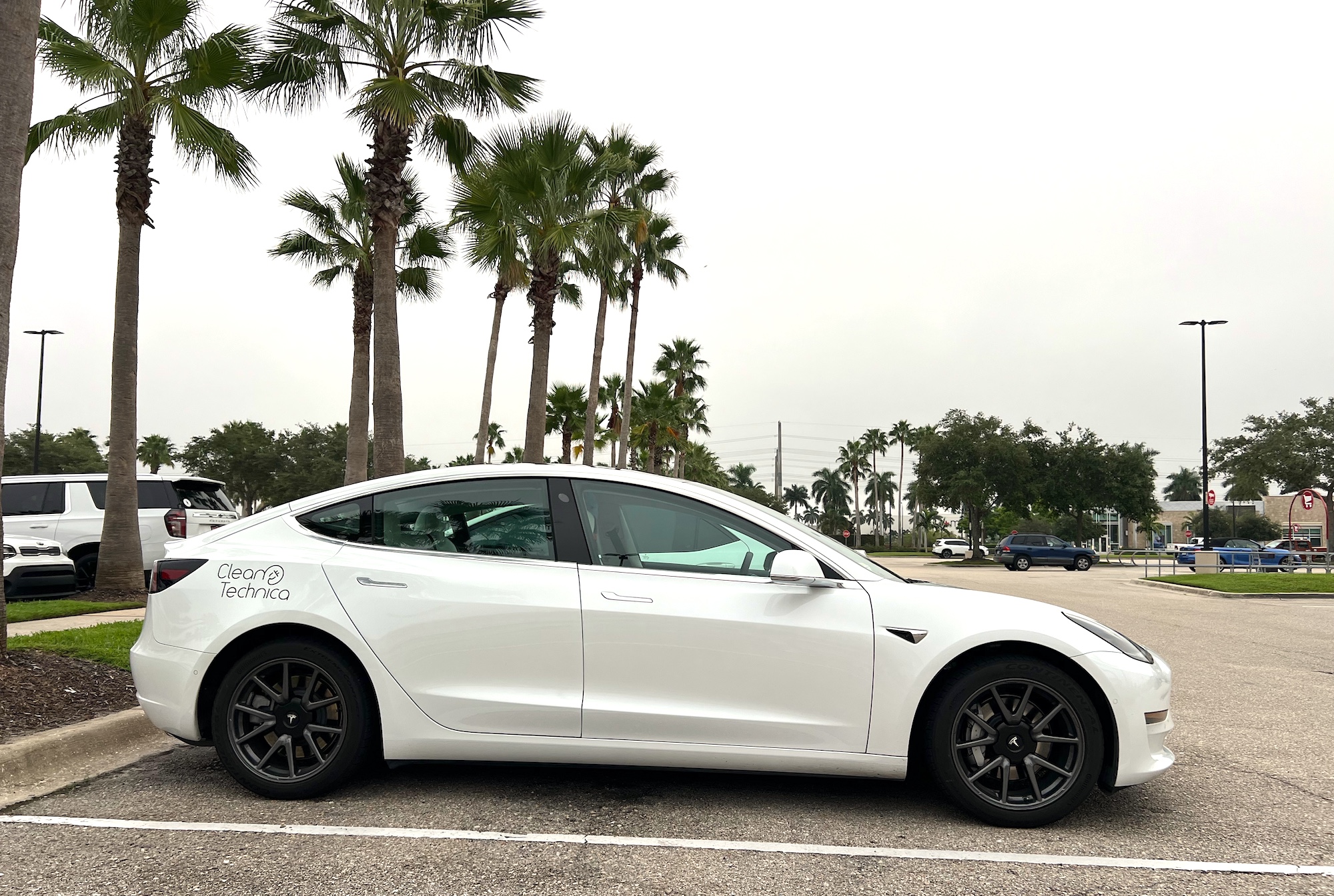
Sign up for daily news updates from CleanTechnica on email. Or follow us on Google News!
The Ember European Electricity Review for 2025 has some good news for renewable energy advocates. The review analyzes a full year of electricity generation and demand data for 2024 in all 27 member countries of the European Union in order to understand the region’s progress in transitioning from fossil fuels to clean electricity. The good news is that solar generated more electricity — 11% — in the EU last year than coal, which dropped to 10% — the first time solar has surpassed coal as the source of electricity in that region.
But wait, there’s more good news. Methane generation fell for the fifth year in a row and total fossil fuel use for electricity reached a historic low in the 2024 survey. According to Canary Media, Chris Rosslowe, senior analyst at Ember and lead author of the report, said in a statement, “Fossil fuels are losing their grip on EU energy. Wind and solar are pushing coal to the margins and forcing gas into structural decline.”
Wind generation outpaced fossil gas for the second year in a row, contributing 17% of total electricity compared to 16% from gas. Overall, Ember found that renewables, a category that includes hydro and bio-energy plus nuclear, provided 47% of the electricity for the EU. Fossil fuels supplied just 29%, which is a significant shift from 2019 when renewables made up 34% and fossil fuels supplied 39% of the electricity mix.
Over the last five years, the region’s energy transition “has moved faster than anyone expected,” Rosslowe added. That’s thanks in large measure to the European Green Deal, a bundle of policies launched in 2019 that set a goal of achieving climate neutrality by 2050. Those policies span from clean energy to agriculture and have been boosted by hundreds of billions of dollars in funding. The move from gas was further accelerated by Russia’s invasion of Ukraine in 2022, although the EU has also ramped up imports of liquefied natural gas from the US and other countries. As solar and wind picked up, coal-fired generation fell to new lows. In 2019, coal was the EU’s third largest power source; in 2024, it fell to sixth. More than half of all EU countries now either use no coal for electricity or rely on it for less than 5% of their power.
Strong Growth In Solar Power In 2024
The transition of the EU electricity sector maintained momentum in 2024, despite challenging political and economic conditions, the Ember report stated. Solar power grew strongly and overtook coal power for the first time. Another year of coal and gas decline — the fifth year in a row for gas — cut EU power sector emissions to below half their 2007 peak and further reduced reliance on imported fossil fuels. Significant progress has been made over the last EU political cycle, but delivery needs to be accelerated. The significant progress has brought benefits beyond reducing emissions. Structural growth in wind and solar power has reduced the EU’s fossil import bill and the bloc’s vulnerability to imported gas. While the progress made in the first half of this decade is impressive, an acceleration is needed between now and 2030.
“The EU is striding closer towards a clean energy future powered by homegrown wind and solar. This new energy system will reduce the bloc’s vulnerability to fossil price shocks, tackle the climate crisis, and deliver affordable energy for its households and companies. Timely policy action that sustains wind and solar growth, accelerates the deployment of clean flexibility and promotes electrification, will help to secure the future of EU competitiveness,” said Dr. Beatrice Petrovich, a senior energy analyst at Ember.
The annual report from Ember highlighted some of the challenges the EU power sector faced last year. Inflation remained above historic levels, which created challenging conditions for investment, and many national and European elections bred concerns that the transition to clean energy would lose support. On the contrary, however, progress toward the region’s energy goals continued unabated. In five years of the European Green Deal, a surge in wind and solar generation is the main reason for declining fossil generation. Without wind and solar capacity added since 2019 because of that policy, the EU would have imported 92 billion cubic meters more methane and 55 million more tons of hard coal at a total cost of €59 billion.
To maximize future benefits, the members of the European Union must continue to accelerate wind power deployment, which is falling short of its maximum potential despite being fully cost competitiveness with other sources of energy. Several factors suggest that wind generation is likely to resume its rising trend, the Ember report claims. Annual capacity additions are expected to increase over the next five years, rising from an estimated 13 GW in 2024 to nearly 30 GW by 2030. Furthermore, offshore wind, which produces more electricity per GW than onshore installations, is expected to make up a progressively larger share of new capacity. In addition, solar is expected to grow even more quickly, with the EU projected to add 110 GW in 2025.
Shift To Renewables Is Of Vital Concern
The strategic, economic, and social case for the energy transition in Europe is clearer than ever, Ember says. While the worst of the energy crisis might be over, Europe’s ongoing dependence on fossil energy leaves it vulnerable to global shocks in an increasingly volatile world. European citizens are still suffering high energy prices caused by Russian aggression in Ukraine and are increasingly feeling the impacts of the climate crisis — from record summer heatwaves to extreme flooding. Not only are renewables addressing these problems by reducing emissions, they are the cheapest solutions available and are overwhelmingly popular.
As political attention shifts to Europe’s industrial and economic performance, some may argue for sustainability to be given a lower priority. But a report by former European Central Bank President Mario Draghi on the future of European competitiveness concluded that the best route to sustainability is through reduced fossil fuel dependency by an industrial policy firmly rooted in the energy transition. The return of President Trump to the White House and the likely US retreat from clean energy leadership presents a clear opportunity for the EU to step up, Draghi explained. “In this context, it is welcome to see continued commitment to the European Green Deal from the new EU Commission, as citizens and businesses stand to benefit from a faster transition. This report outlines what happened in EU electricity in 2024, the progress made during five years of the European Green Deal and key priorities to unlock further advances.” Ember wrote in its report.
The trajectory or renewable energy is somewhat ahead of similar trends in the US, where solar and wind combined overtook coal on the power grid for the first time in 2024. Coal has been eliminated from the power grid in the United Kingdom, which shuttered its last coal-fired generating station in September of 2024.
Chip in a few dollars a month to help support independent cleantech coverage that helps to accelerate the cleantech revolution!
Have a tip for CleanTechnica? Want to advertise? Want to suggest a guest for our CleanTech Talk podcast? Contact us here.
Sign up for our daily newsletter for 15 new cleantech stories a day. Or sign up for our weekly one if daily is too frequent.
CleanTechnica uses affiliate links. See our policy here.
CleanTechnica’s Comment Policy




